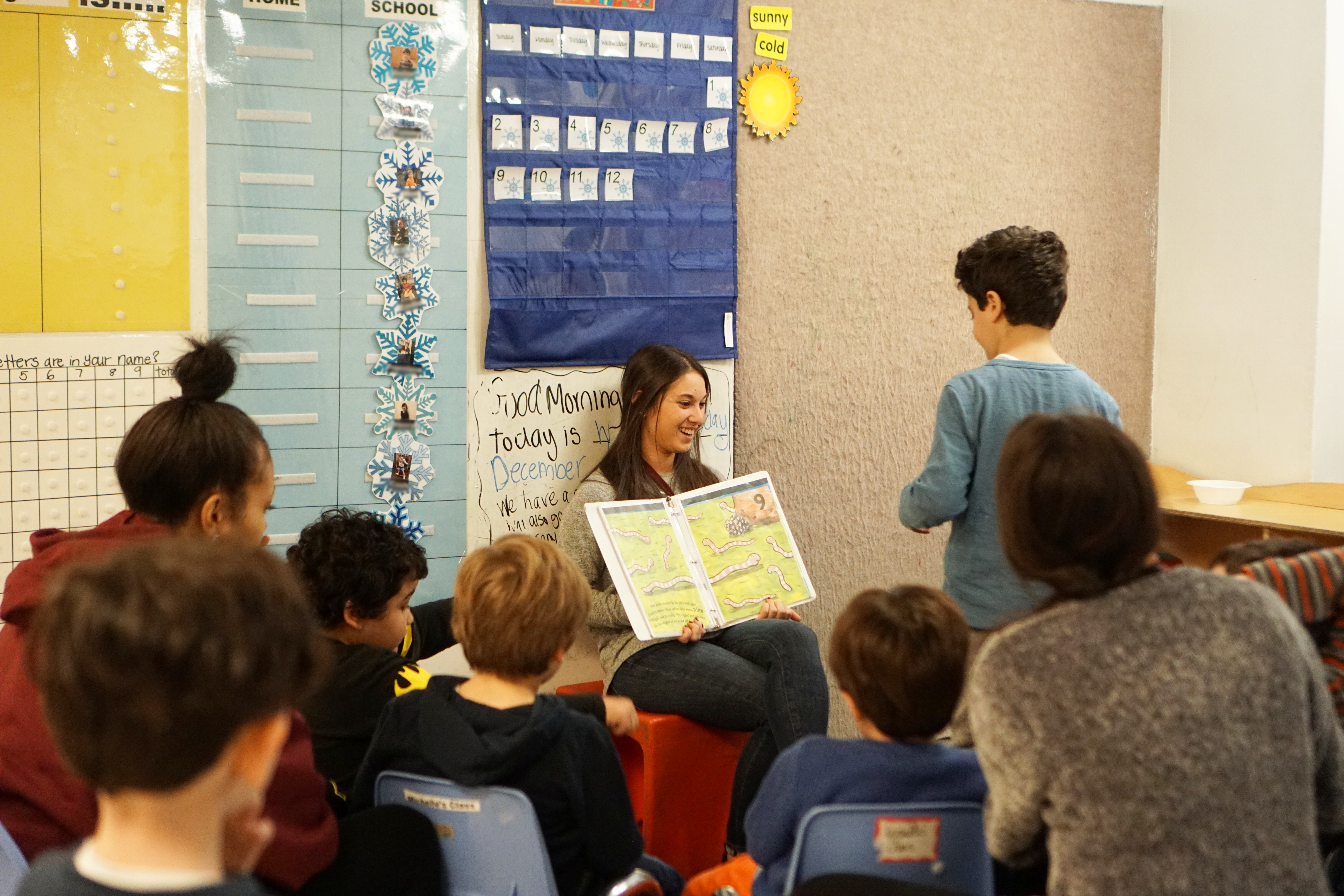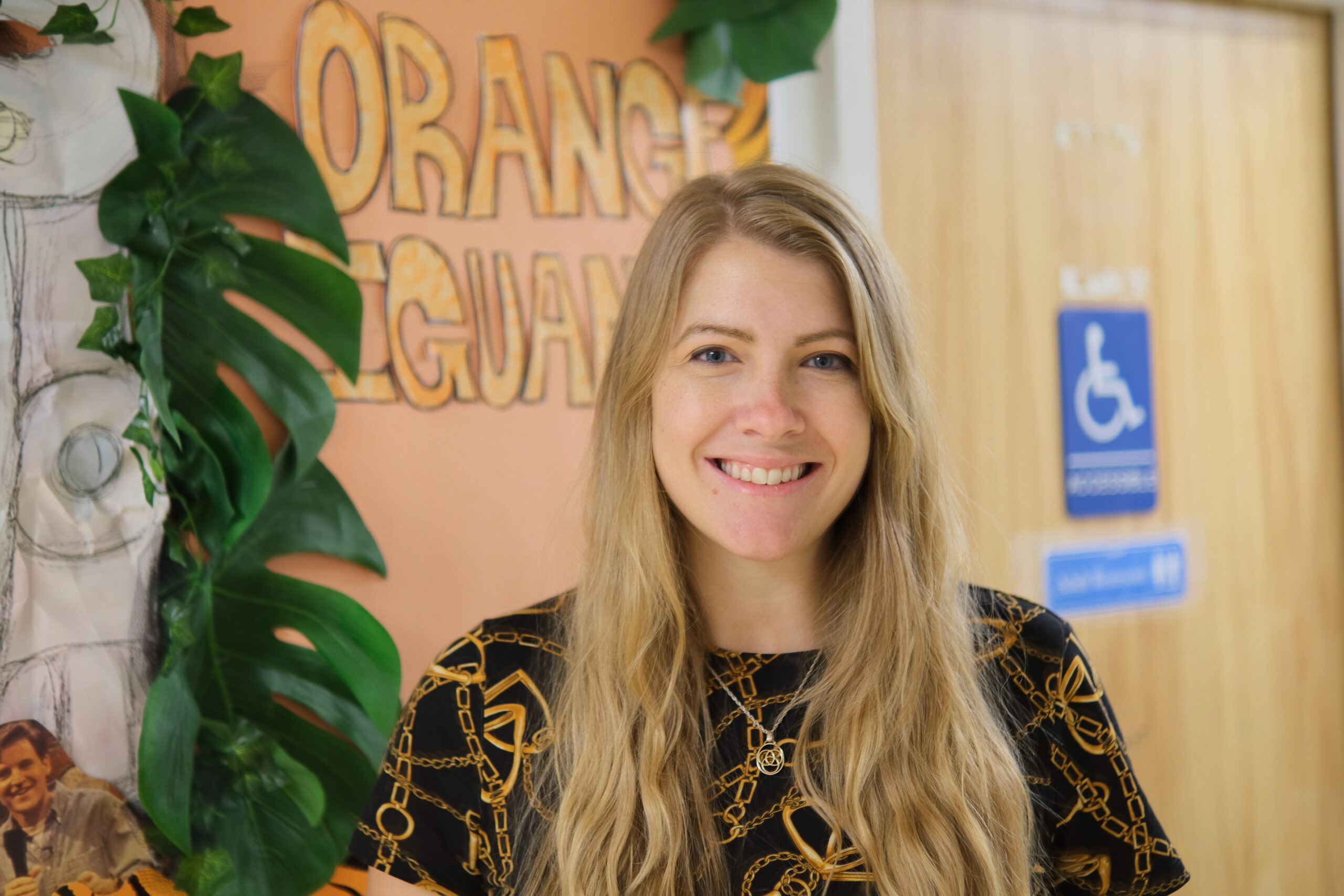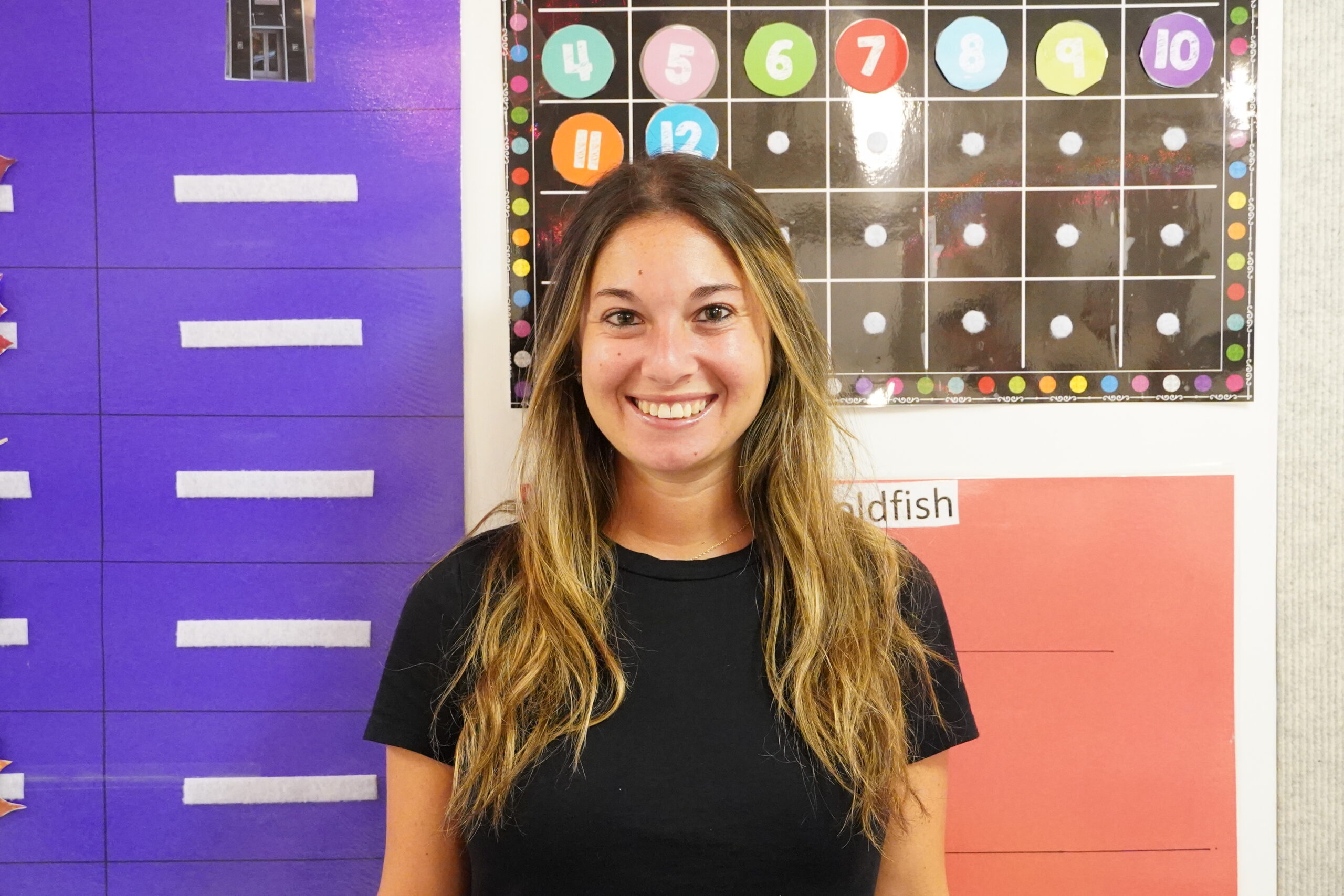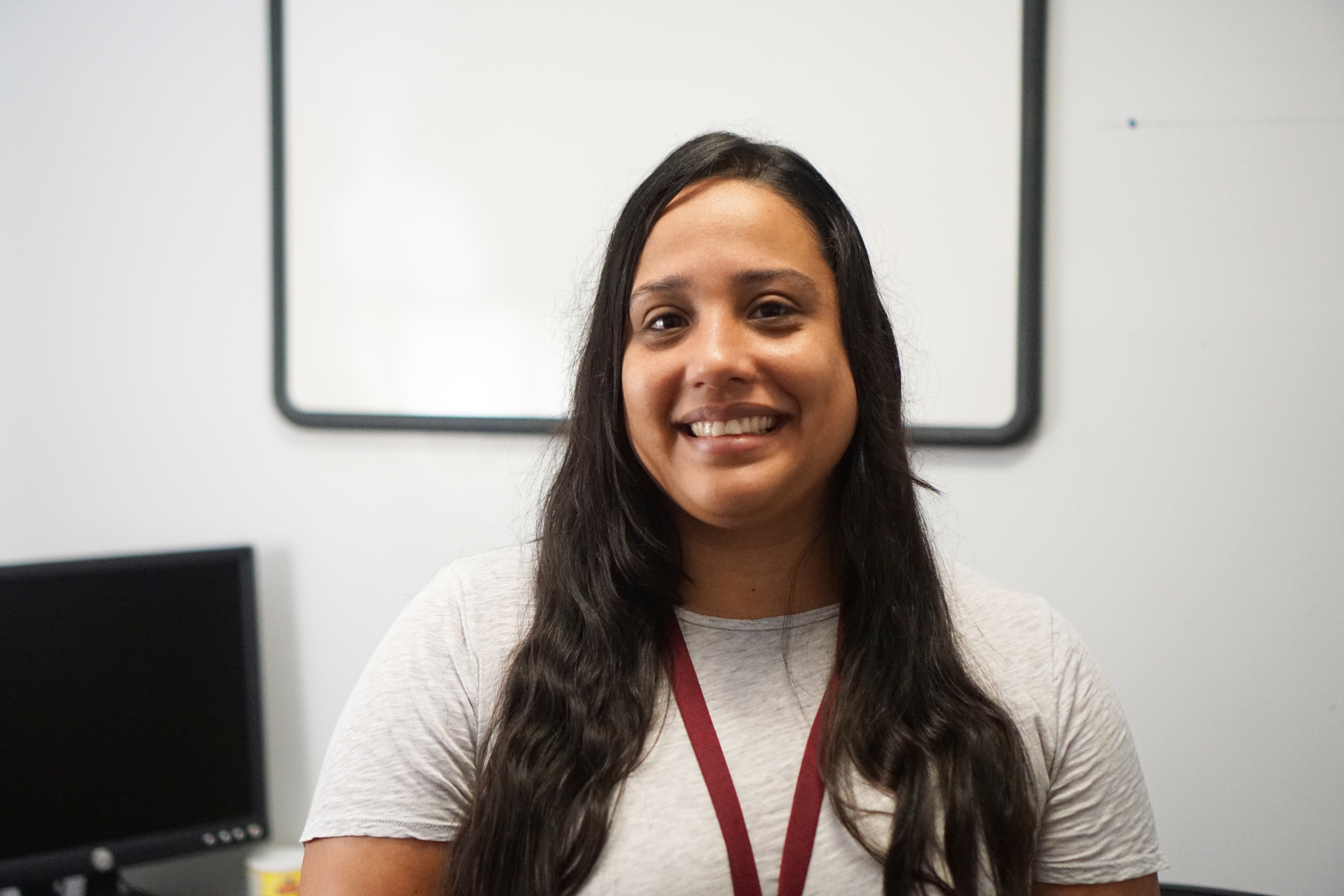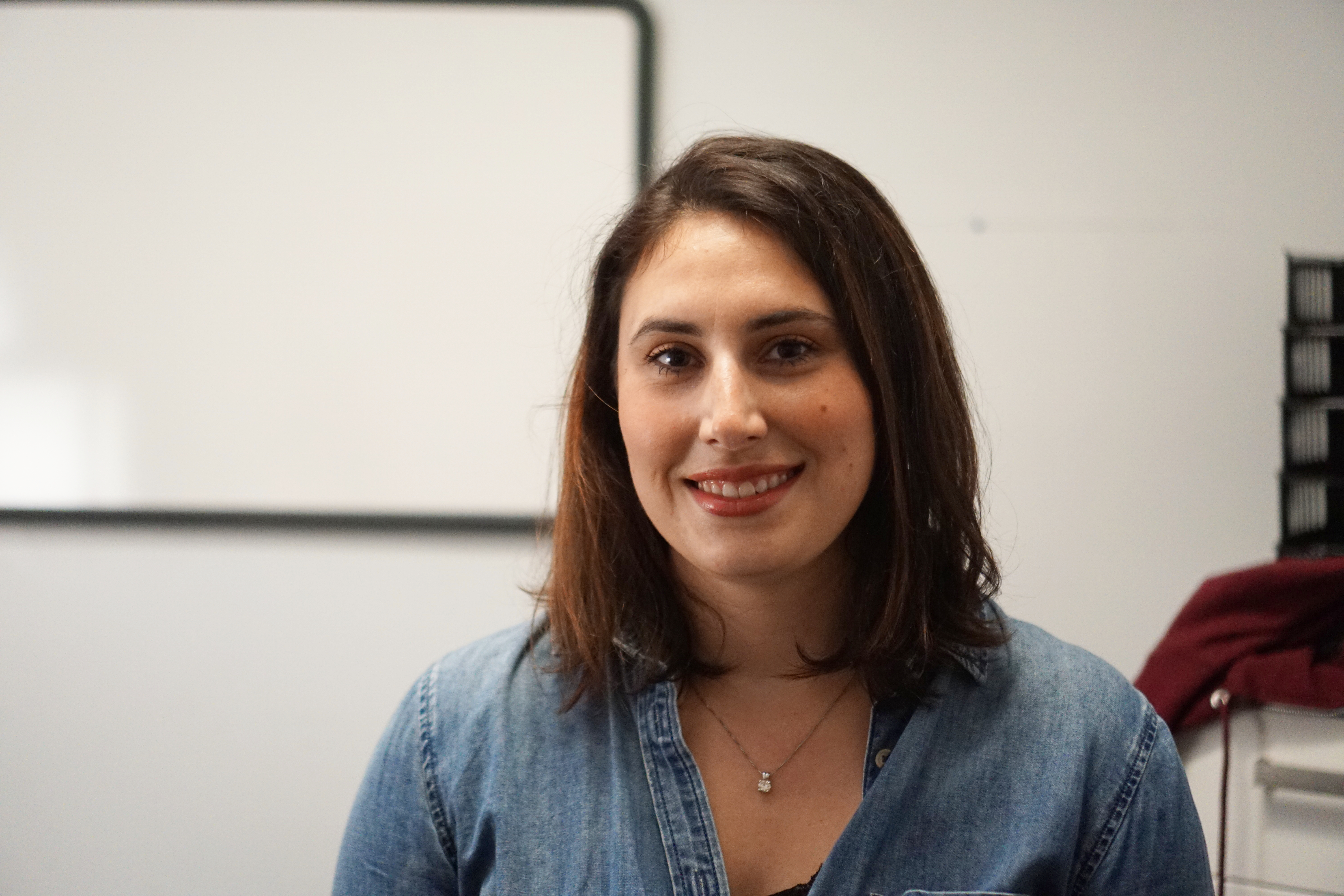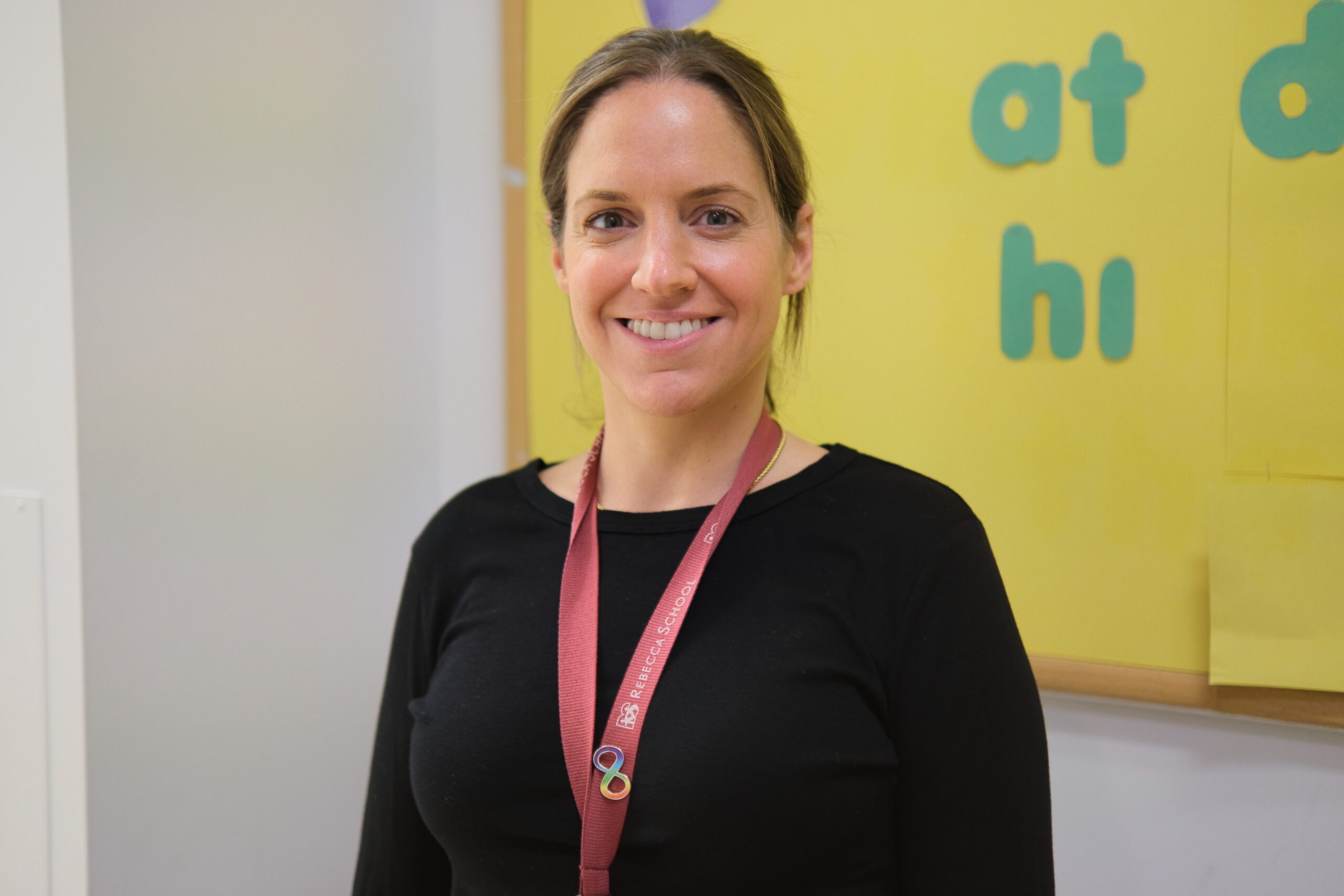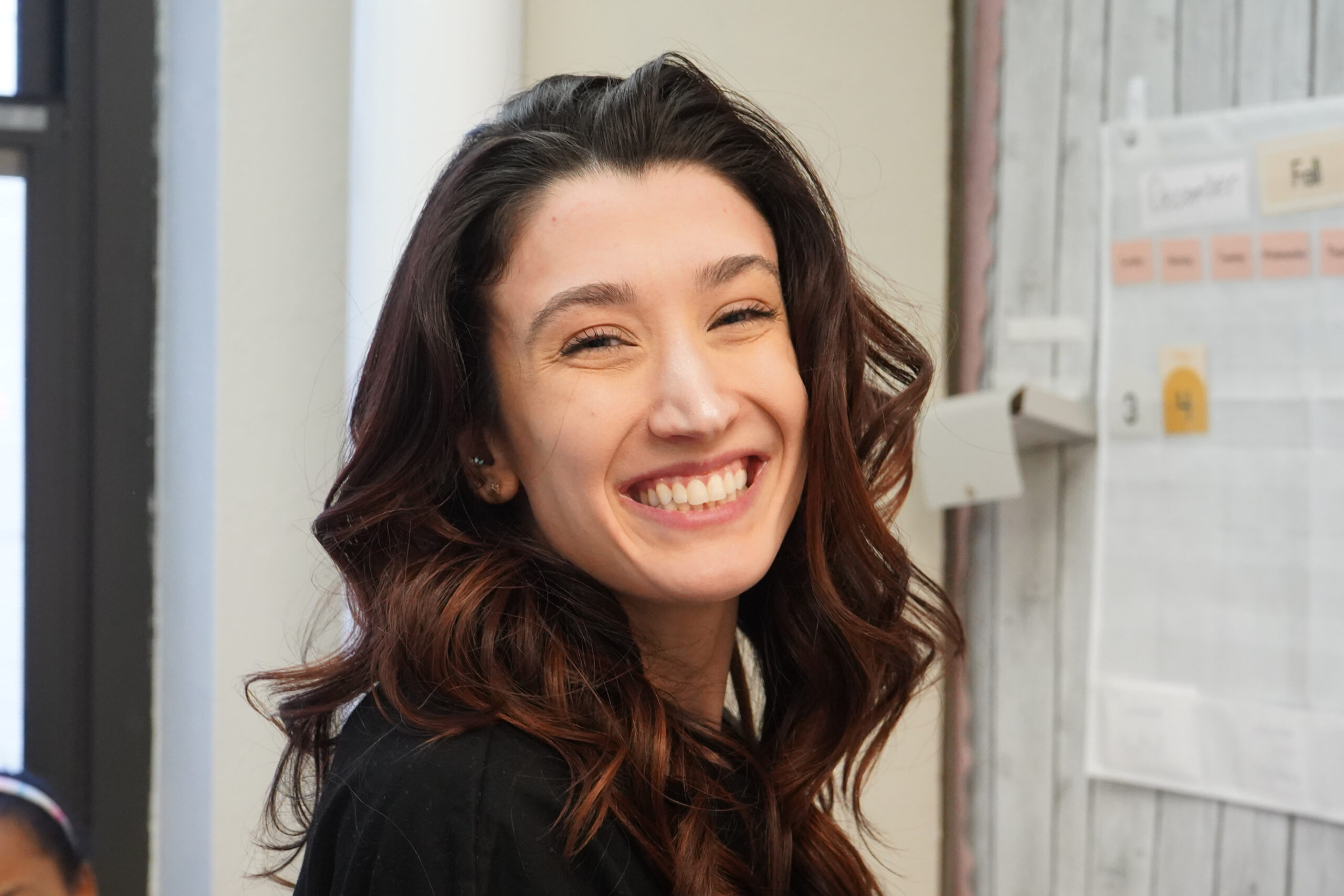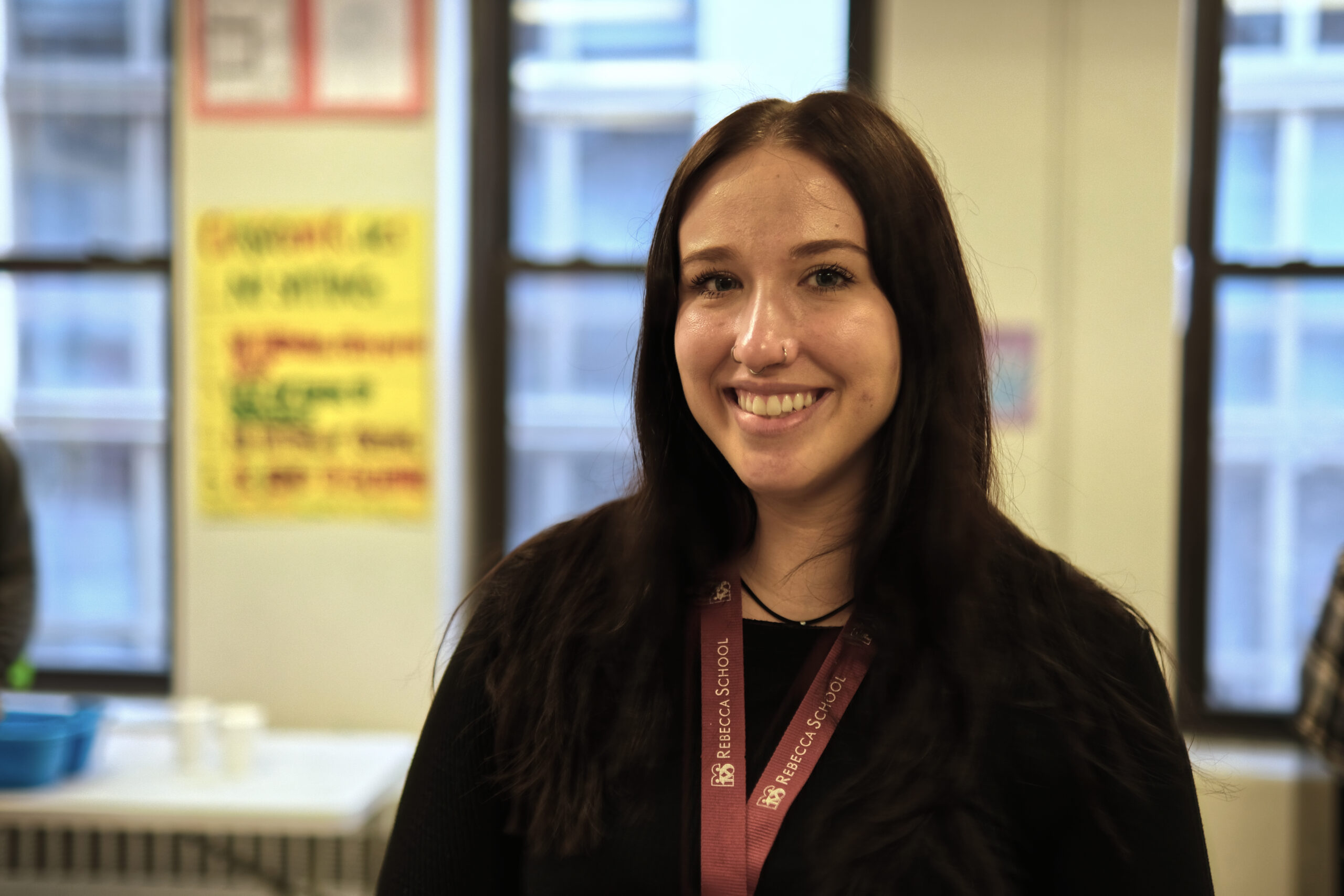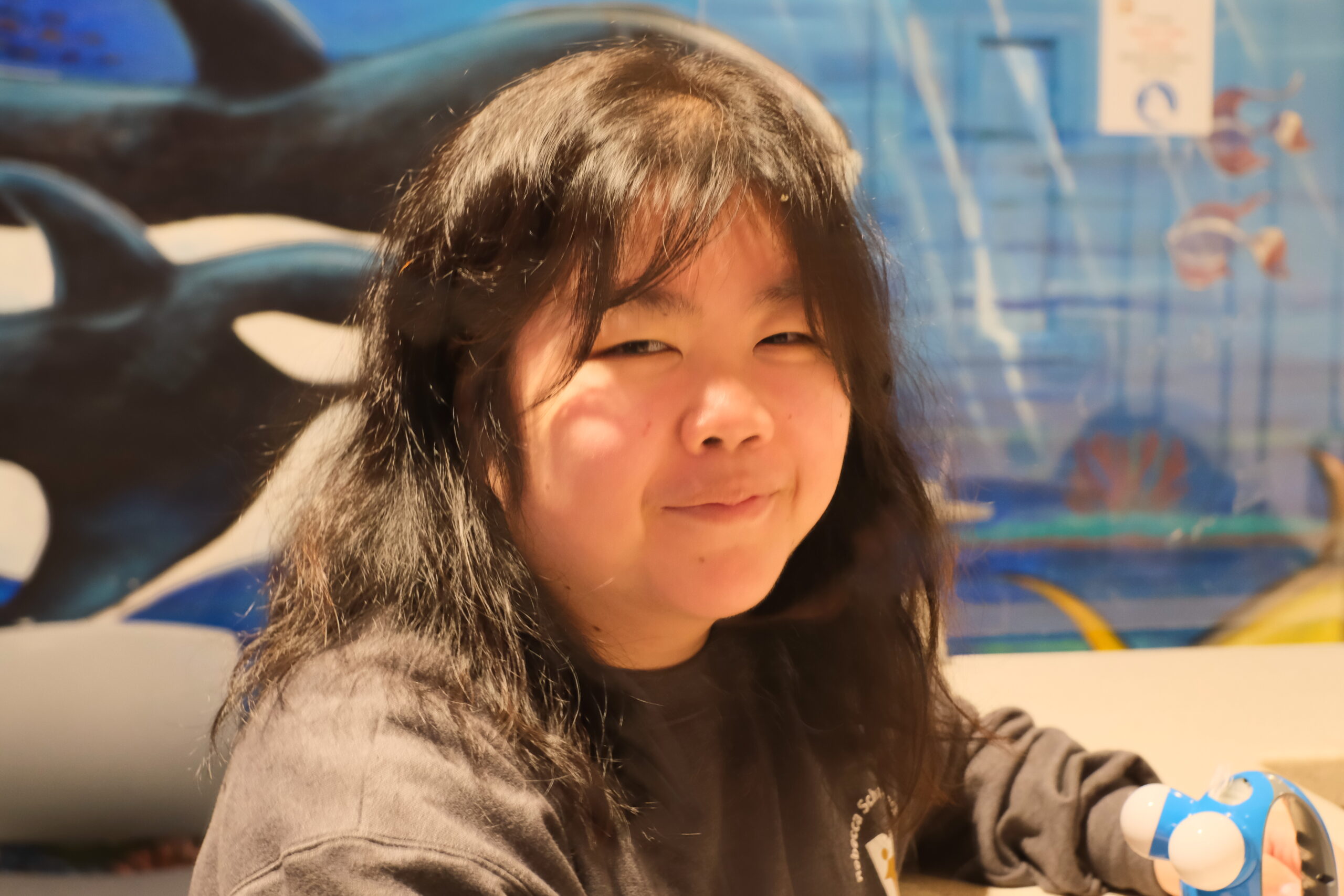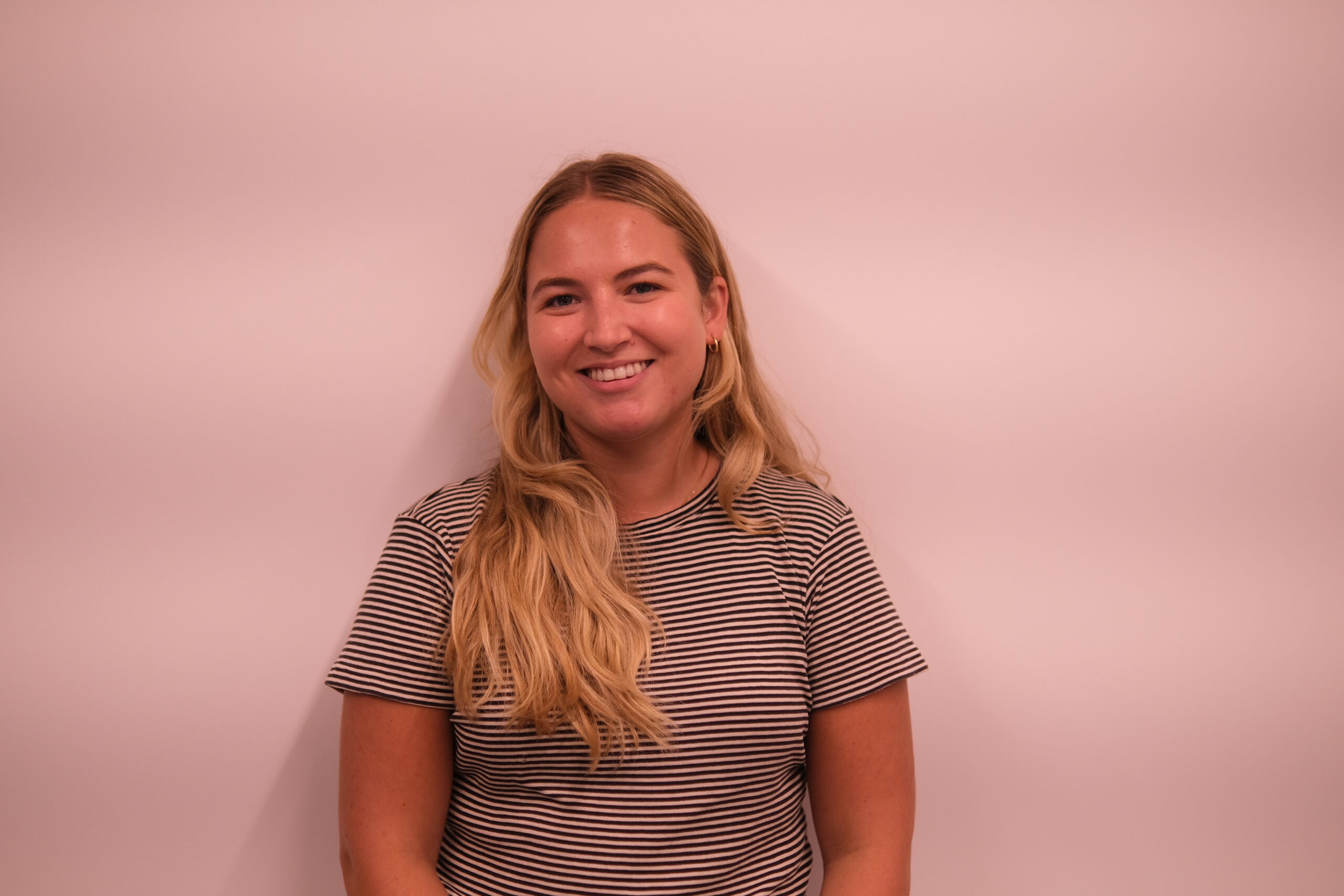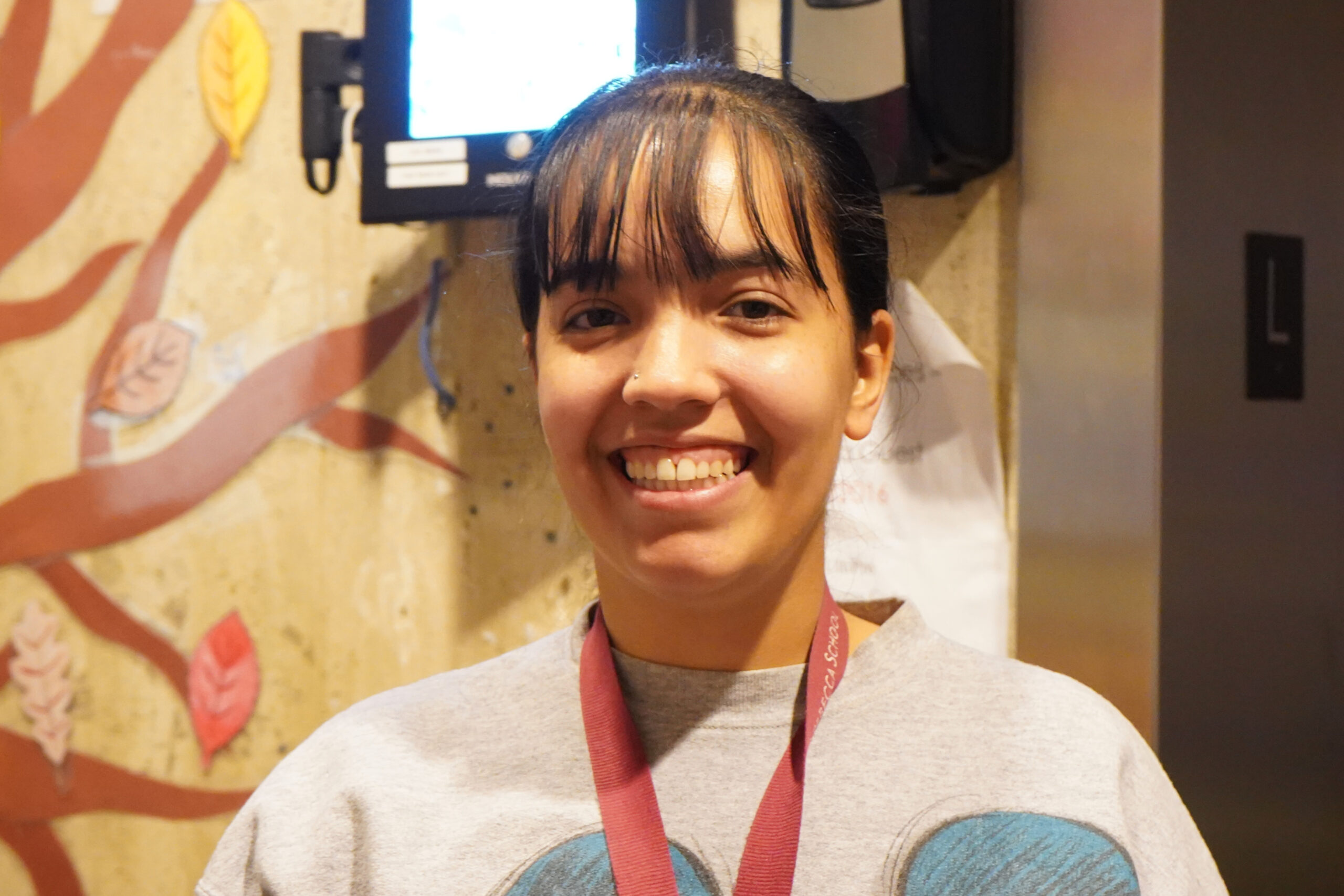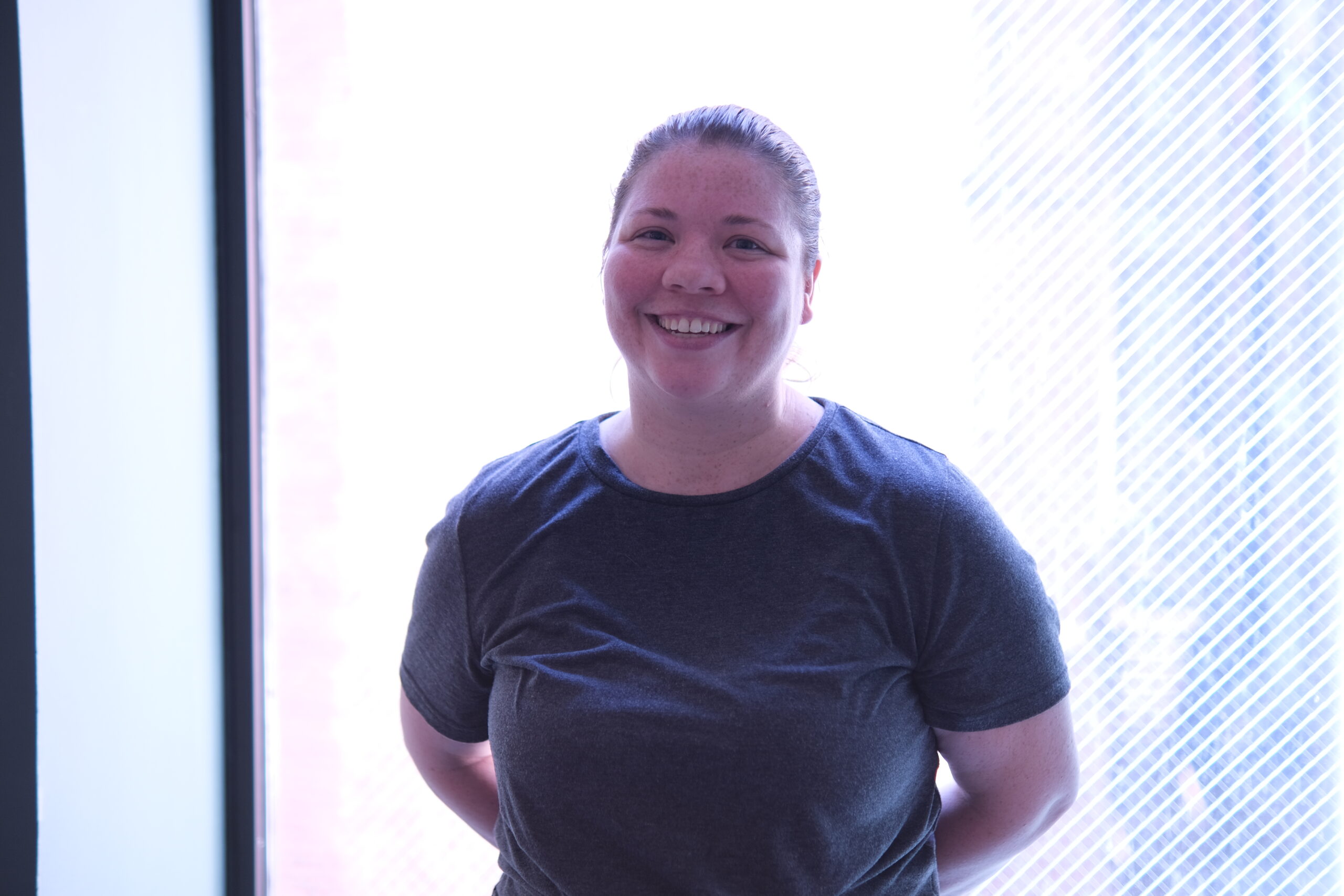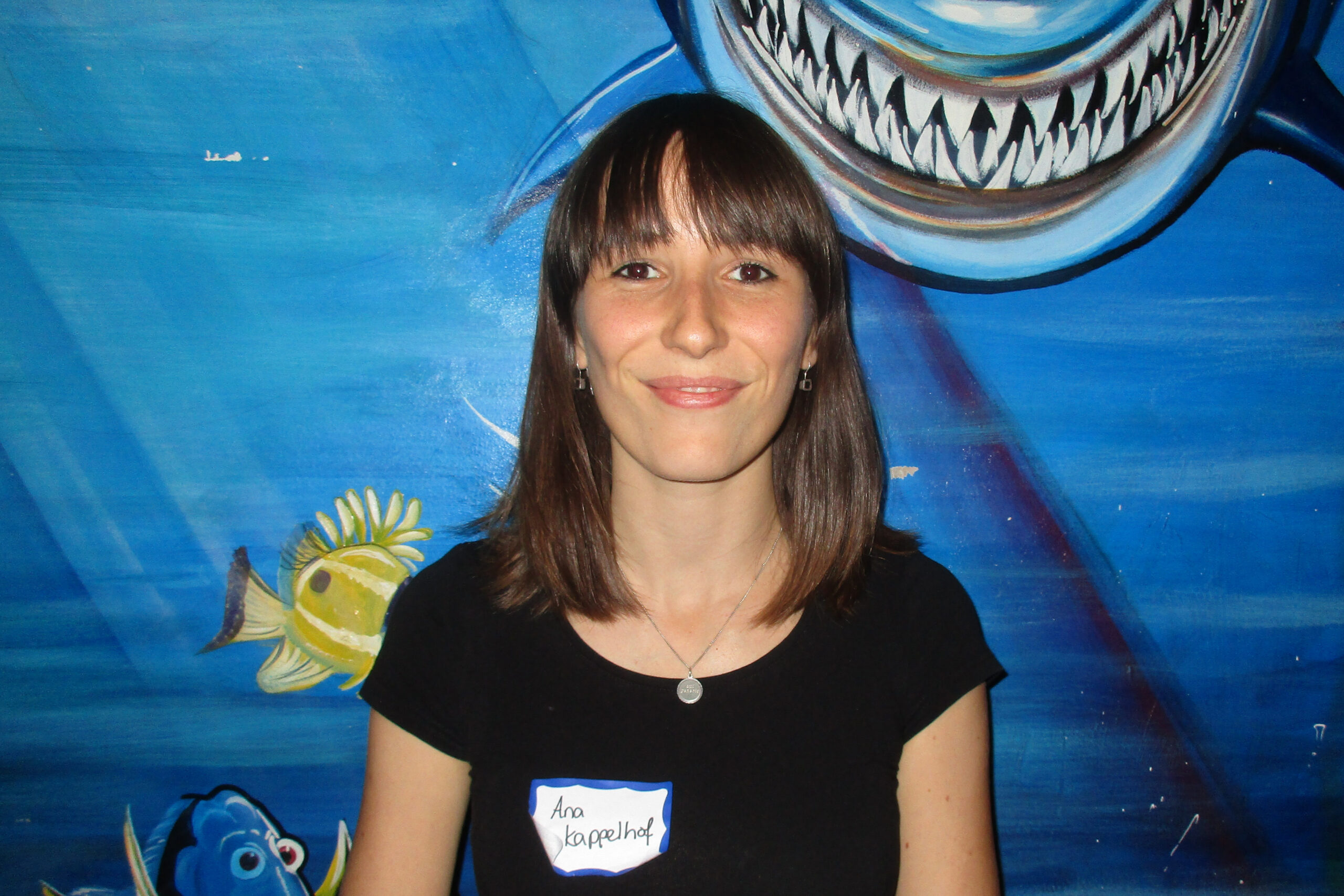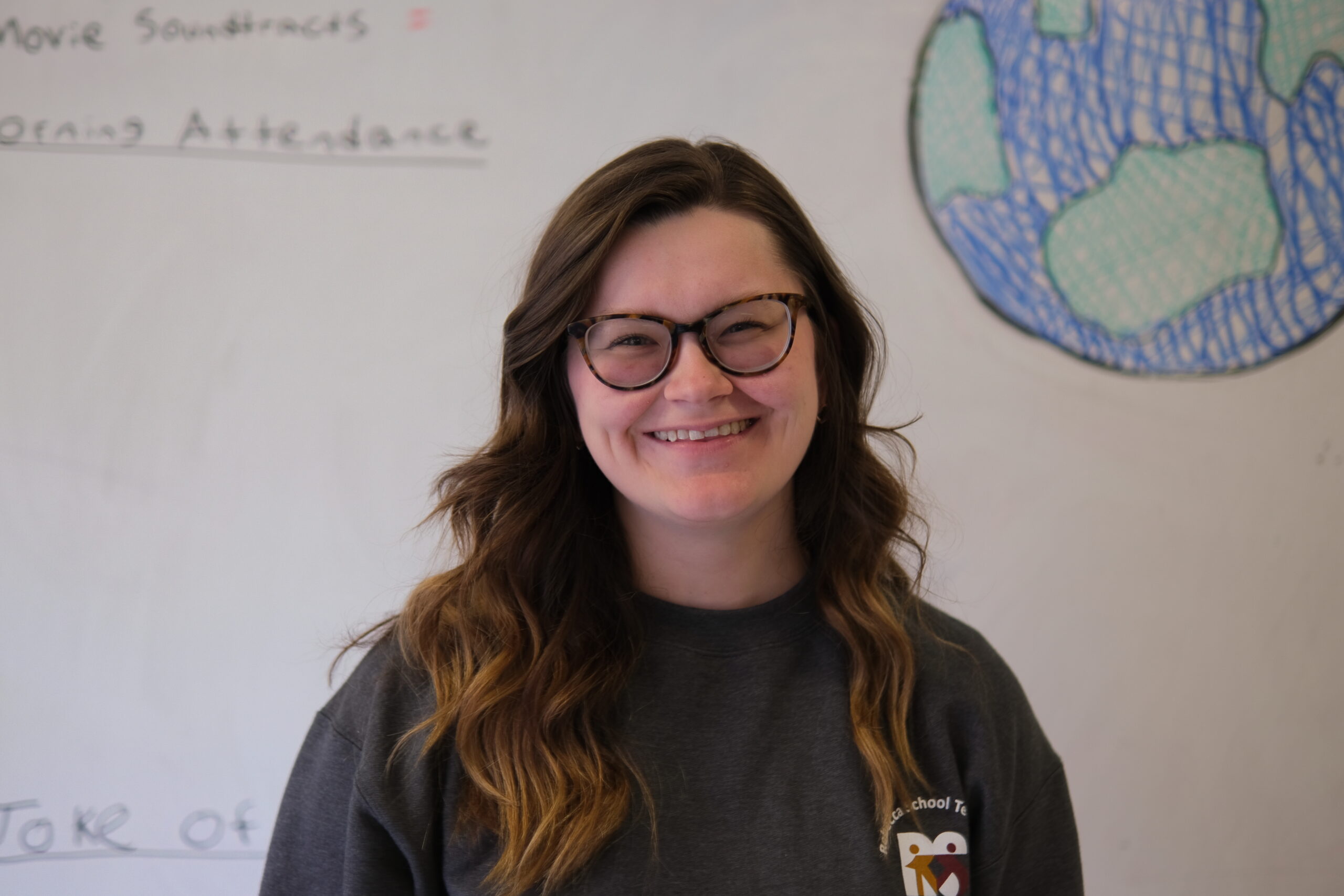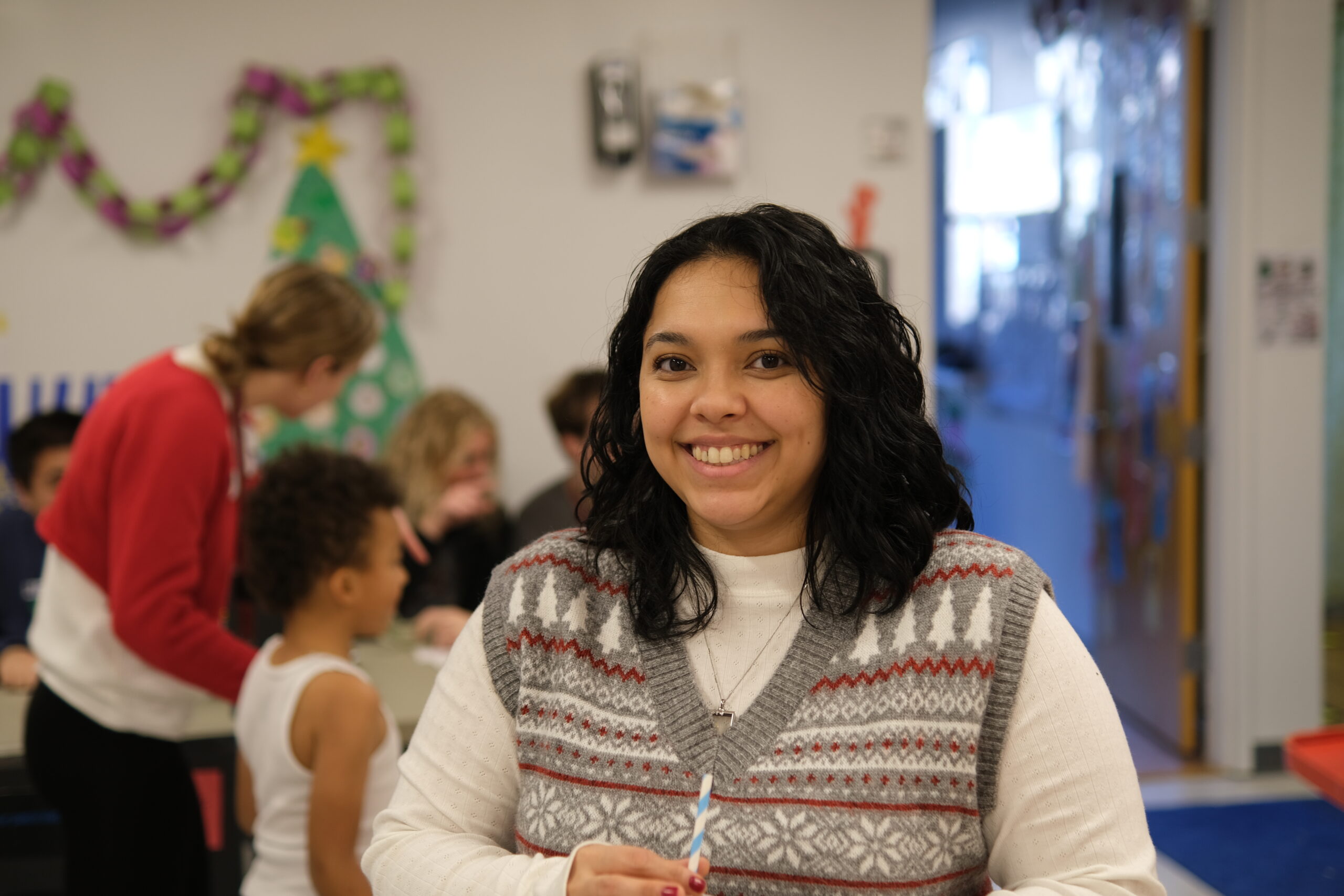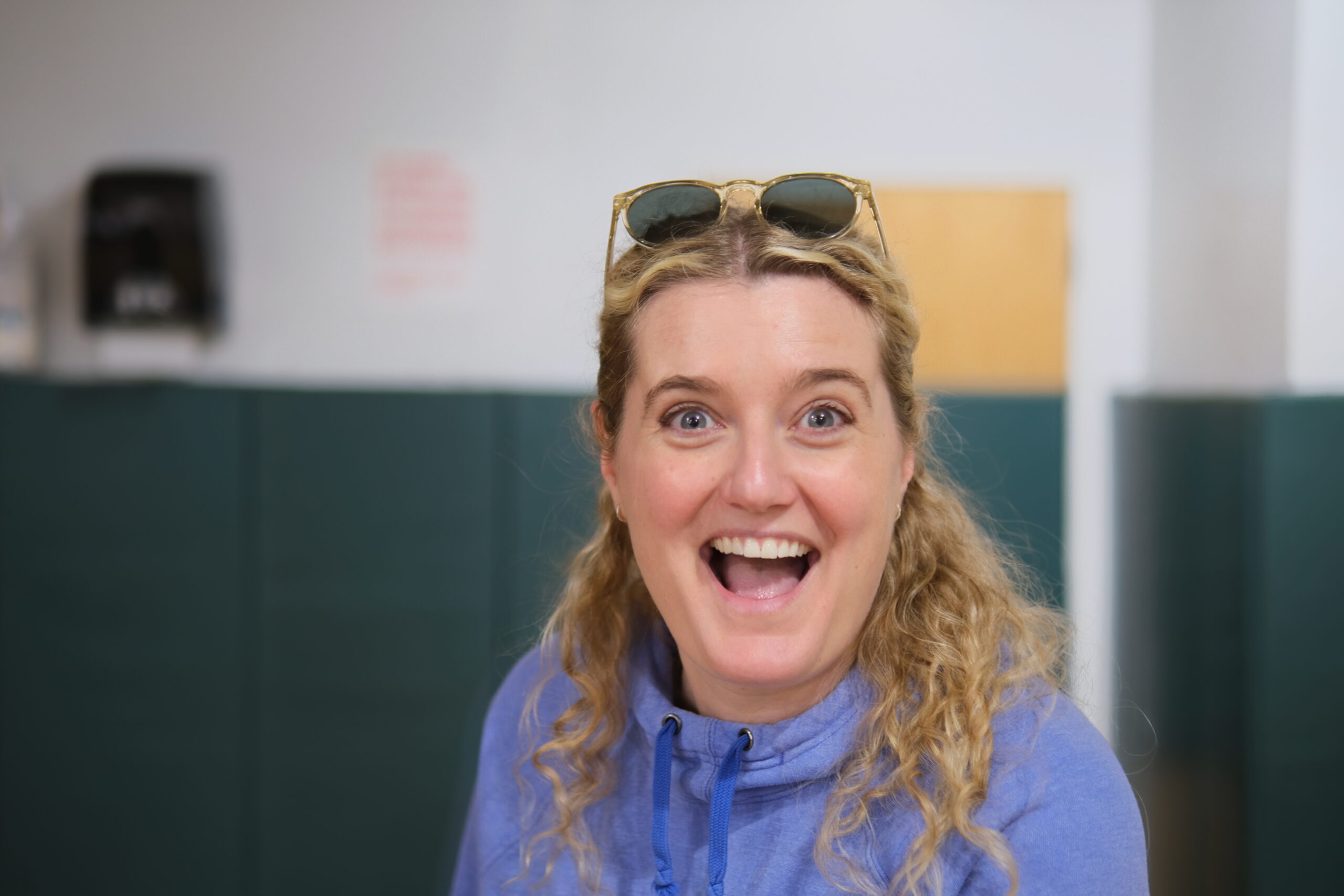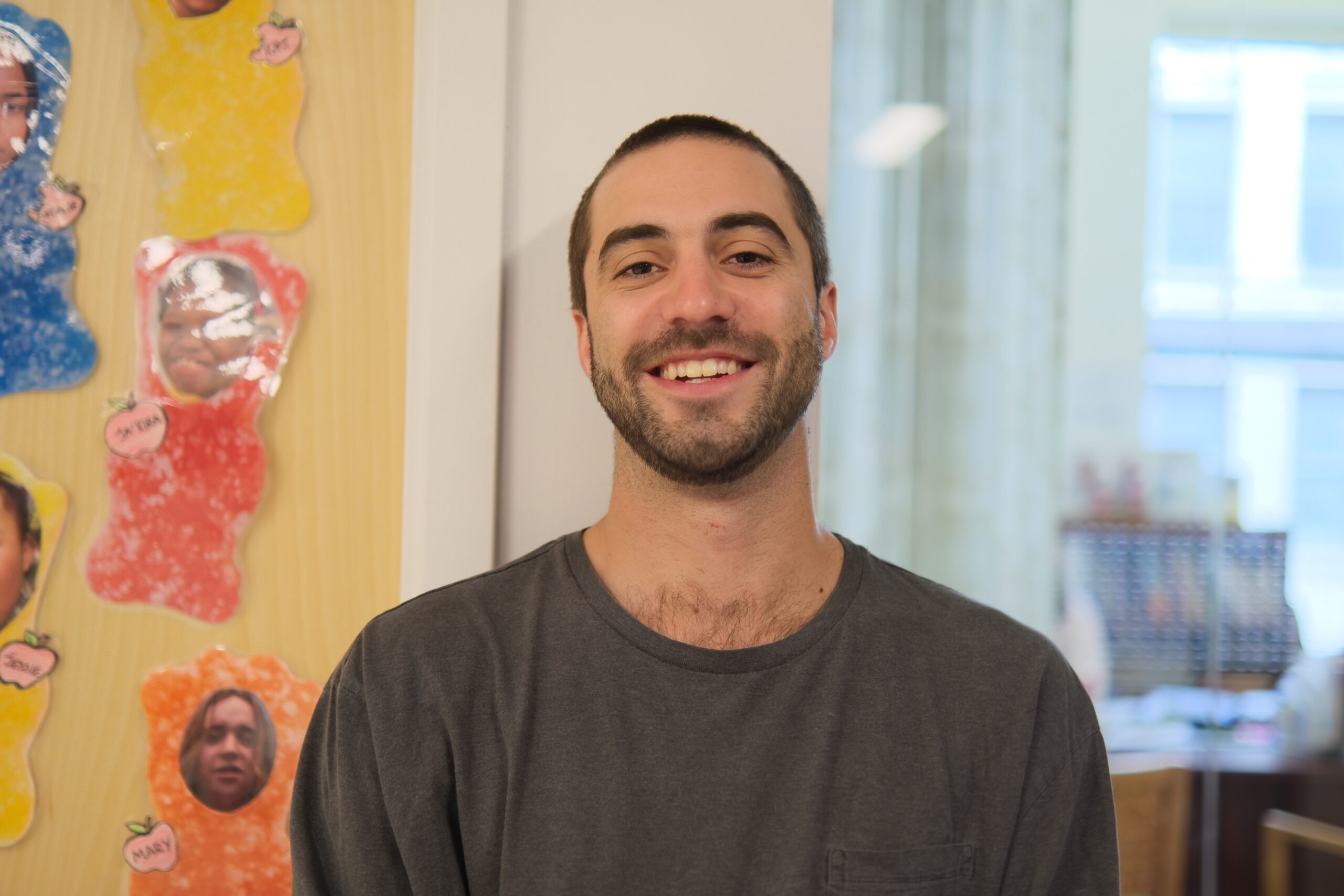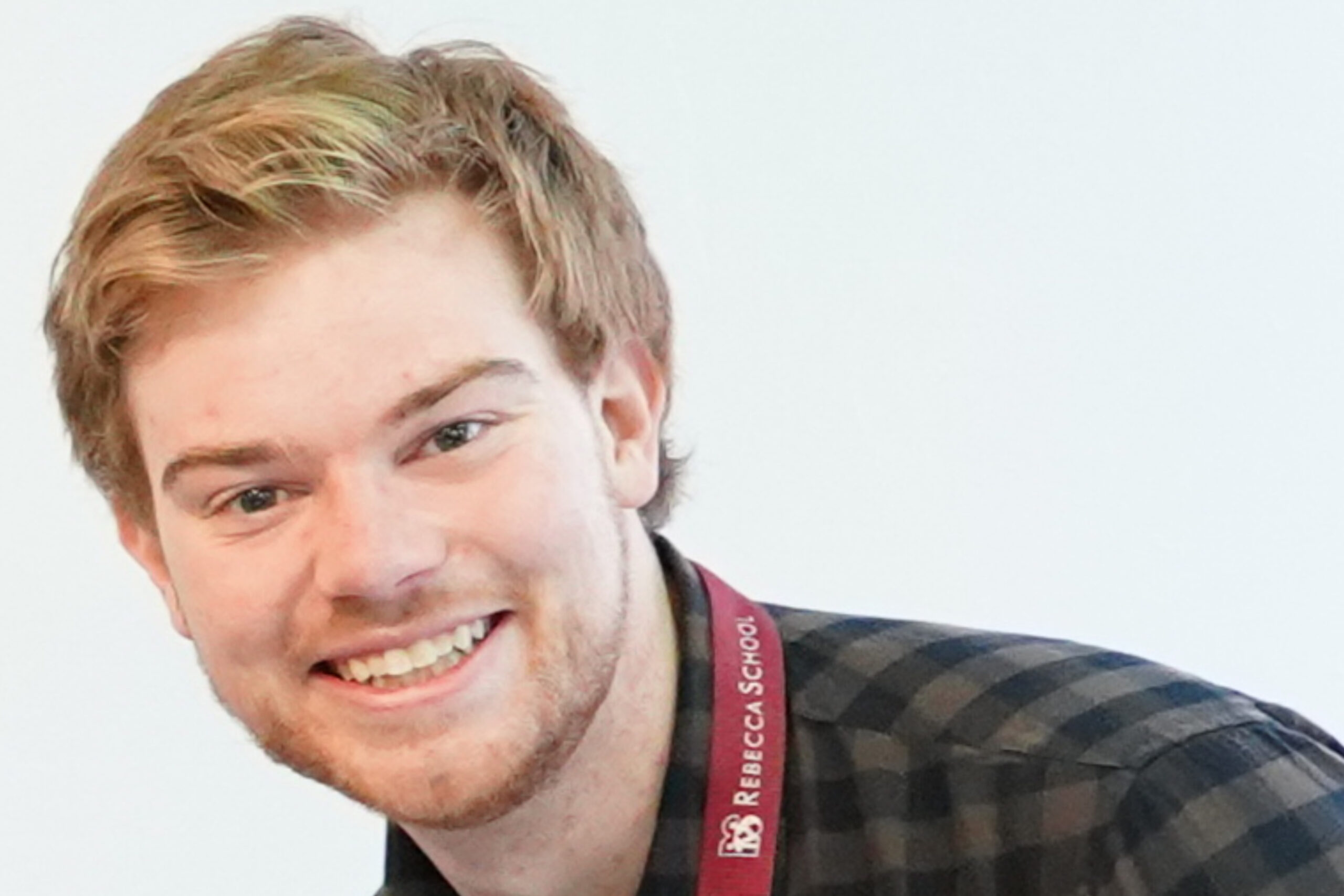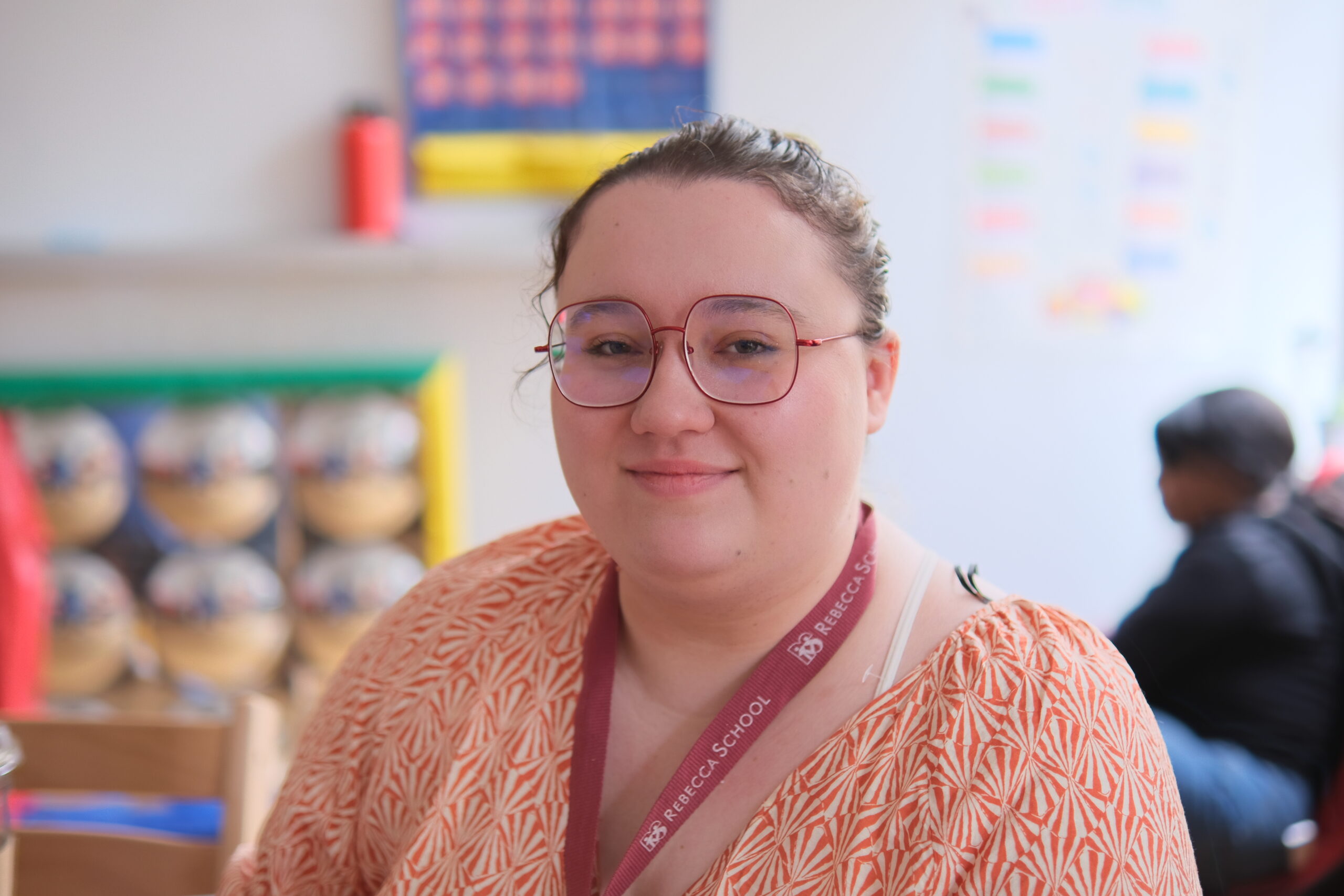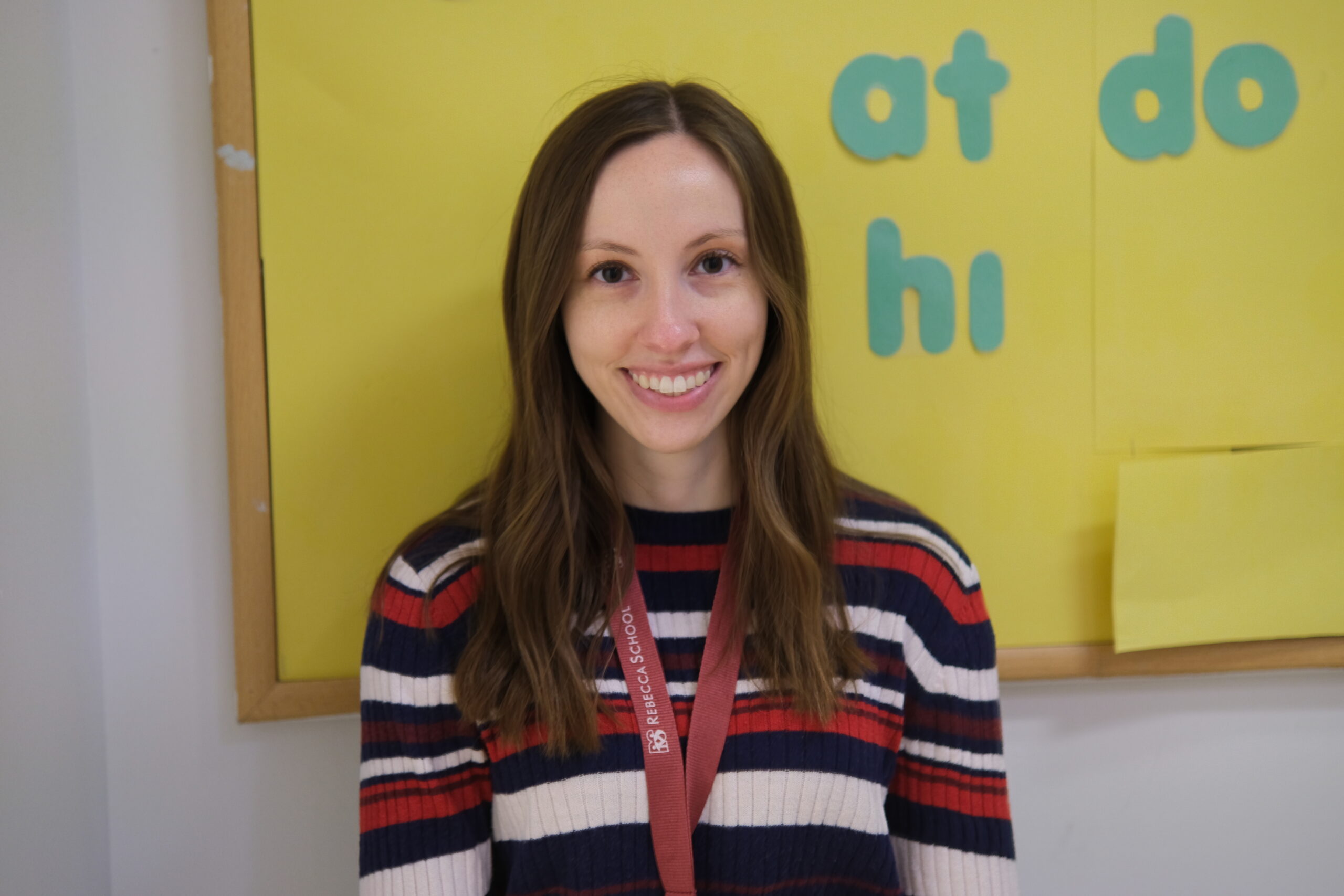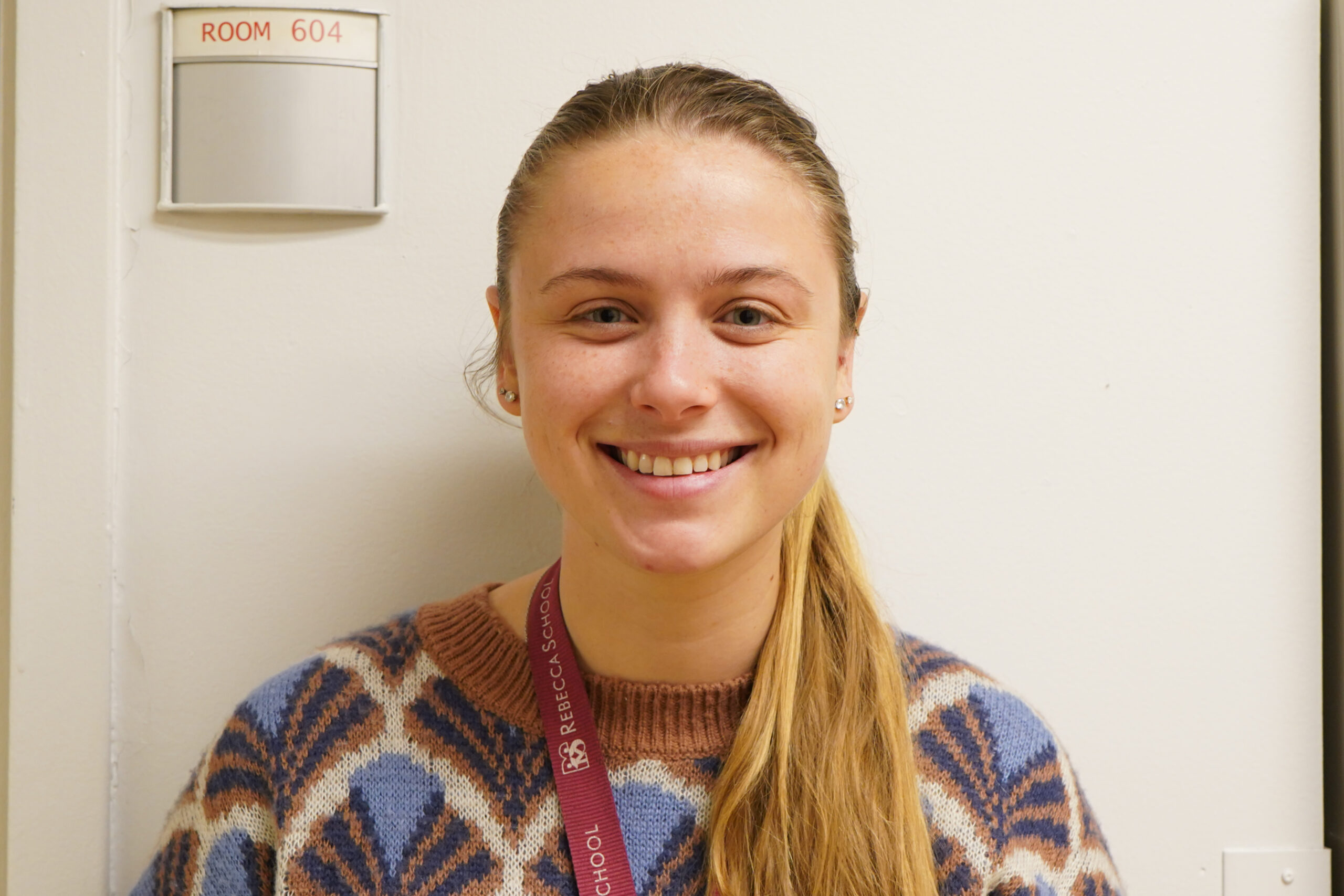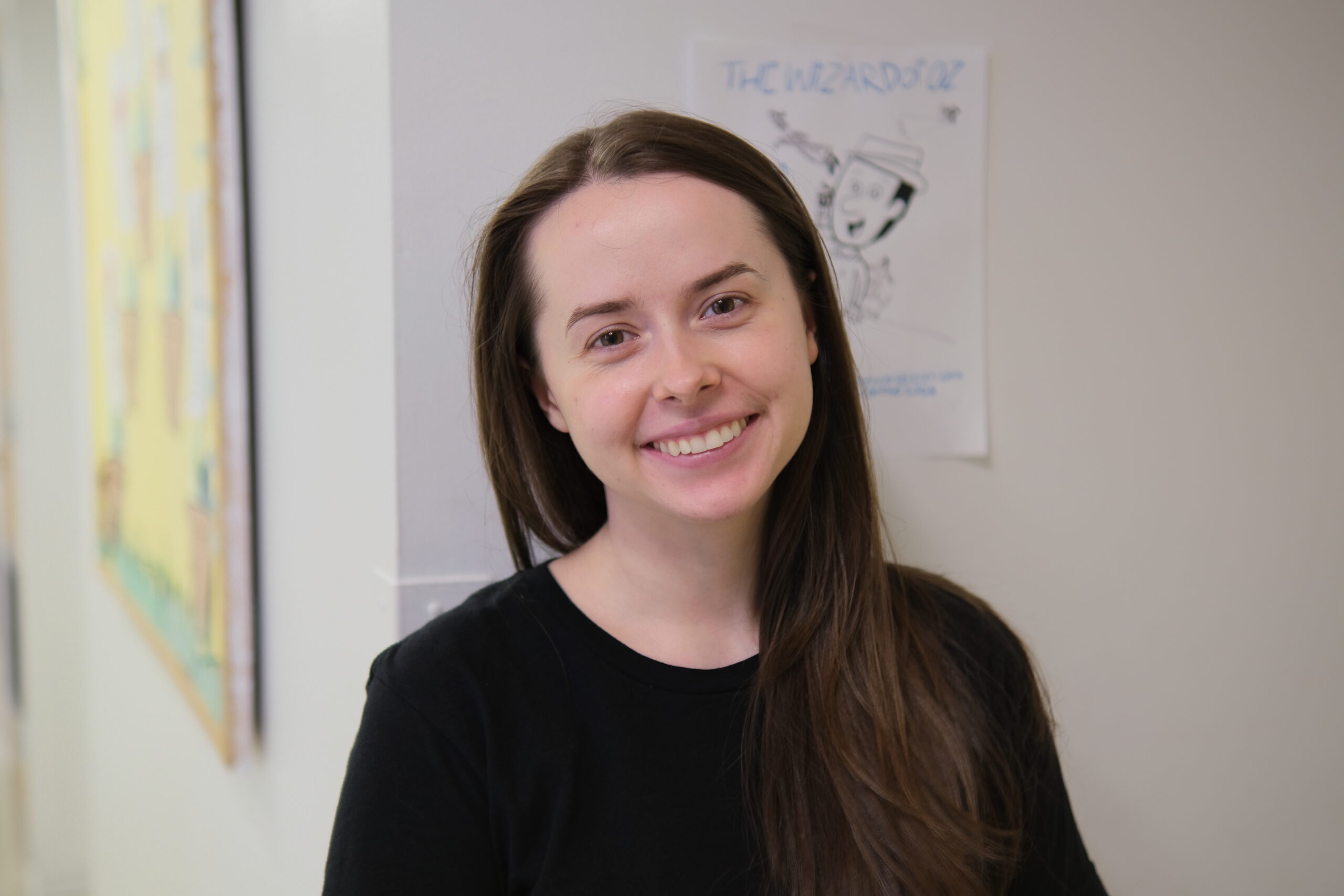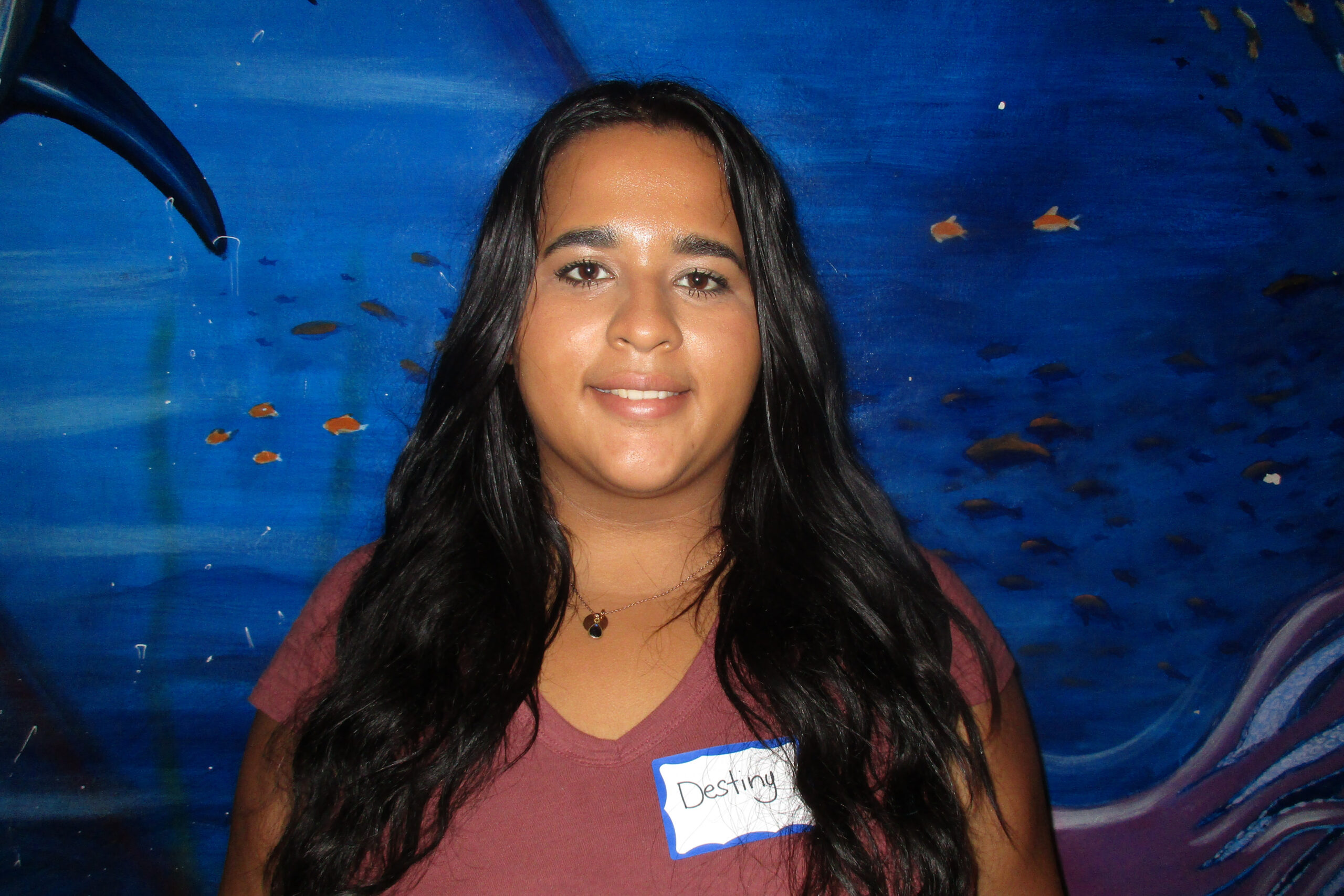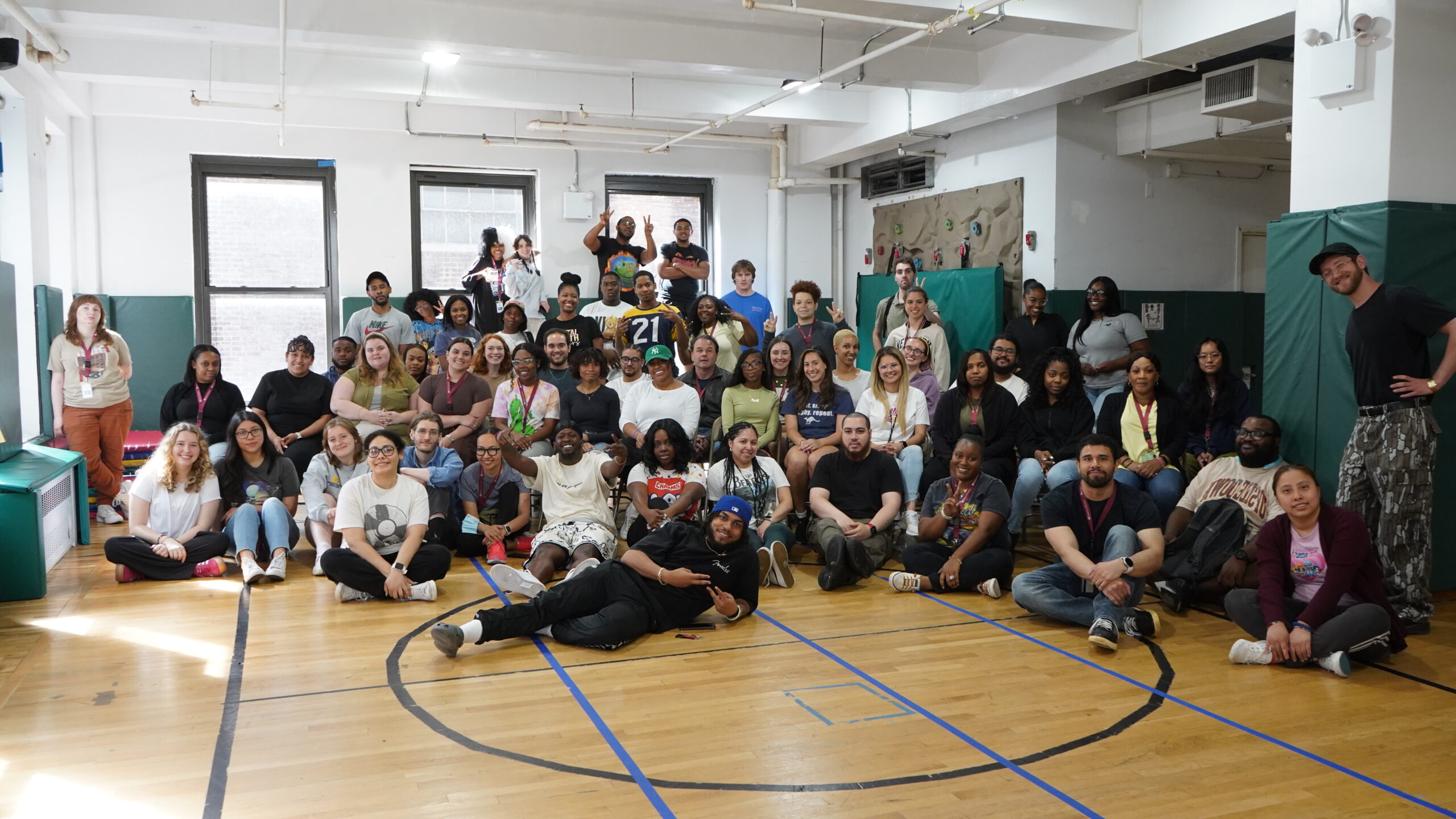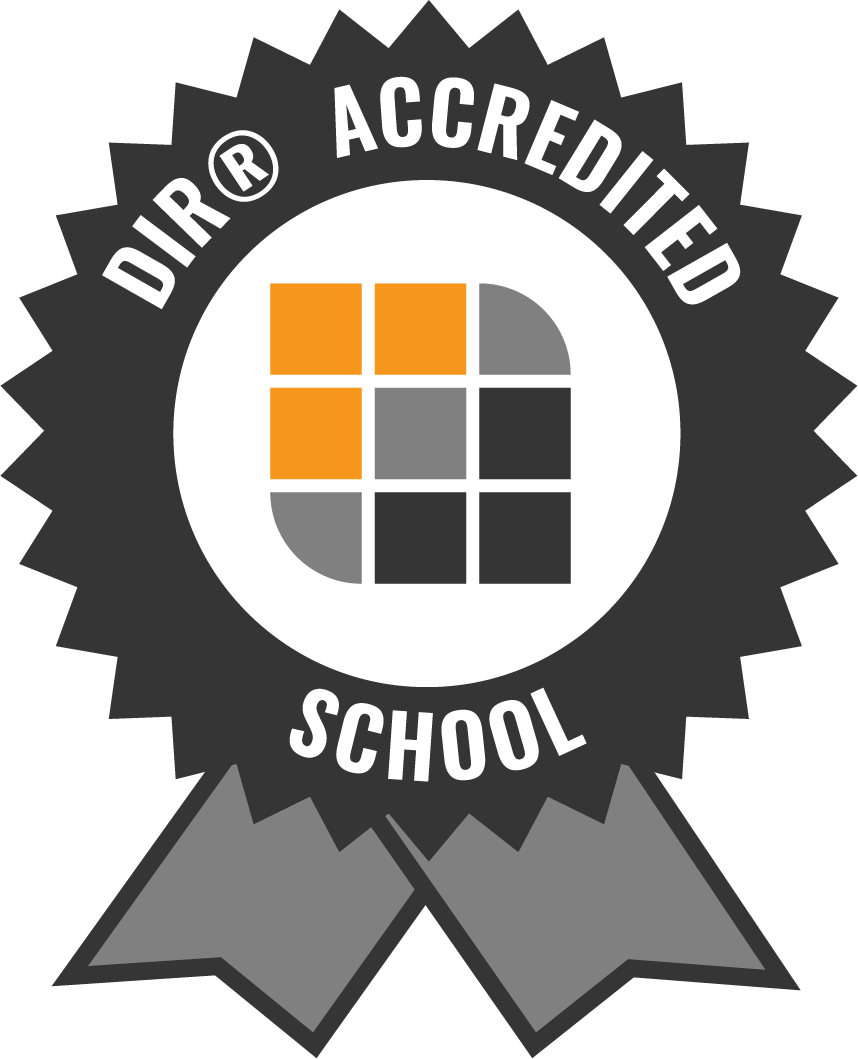At the Rebecca School, students are exposed to a wide variety of literature including poems, songs, fairy tales, plays, and nonfiction. The Literacy program at the Rebecca School places comprehension as the primary focus. Those students who are already readers may be working with reading materials that are below their decoding level, however, these texts challenge them to answer more complex comprehension questions about inferences and conclusions, perspectives, plot sequence, and making predictions. In this way we are supporting their symbolic thinking rather than their memory skills. With our emerging readers we work heavily on their auditory comprehension of texts. Favorite songs and rhythmic patterns in predictable and emotionally rich texts are used to help children develop a strong sight word vocabulary and increased fluency. Decoding skills are used later to support students who have early sight word fluency. Our literacy goals address four major areas of literacy, comprehension, fluency, word recognition, and interest in reading. We use the following programs to inform our curricular approach.
Balanced Literacy: Provides skills for reading, writing, thinking, speaking, and listening through a variety of strategies including modeled, shared, guided, and independent reading and writing. Students are immersed in a print rich environment. Sight words around emotionally relevant themes and objects help students with concepts of print awareness and reading readiness skills.
Lindamood- Bell: Verbalizing for Language Comprehension and Thinking (V/V): Works to develop a student’s big picture thinking. Through guided questions and a hierarchy of skill building, students work to improve language comprehension, critical thinking, and expressive language. The program’s goal is develop a student’s ability to create symbolic representations of texts as they read them in order to build on comprehension and inference skills.
Learning without Tears: Teaches strategies for fluent and legible handwriting. Through hands on, multisensory developmental approach, the program targets student’s core challenges in fine motor control. The program begins at a pre-K skill level, working with students to develop hand readiness skills, finger control, and improved body awareness. For older students, the program provides instructional techniques for consistent habits for correct letter formation. Rebecca School Teachers and Occupational Therapists work together to plan handwriting and pre- handwriting activities in every classroom.
The math program at the Rebecca School places an emphasis on process over product. Students work to understand mathematical concepts in relation to the real world rather than practicing rote memory number facts. Our areas of mathematical inquiry include concepts of Number Sense, 1:1 correspondence, money, measurement, and space/time. We use Visual Spatial Reasoning Program, Ablenet and the Common Core Standards to help develop our math program.
Visual Spatial Reasoning: Thinking Goes to School: Piaget’s Theory in Practice, by Hans G. Furth and Harry Wachs is a program that develops student’s ability to use visual spatial reasoning, a vital capacity necessary for the development of body awareness, and many pre-academic skills. Visual-Spatial thinking plays an important role in math readiness and the understanding of math concepts. For example, purposeful eye movement (tracking) is necessary for a student to count manipulatives or scan an equation. Knowledge of three-dimensional space depends largely on the knowledge of the three-dimensional space of one’s own body. A lack of awareness of the body’s axes can lead to difficulty with math concepts, such as size, quantity, and spatial transformation. Visual-spatial thinking is also required for higher math concepts such as pattern recognition.
Science at the Rebecca School involves hands on multisensory exploration of a student’s own natural world. Teachers differentiate activities for each ability level to incorporate the cornerstones of scientific learning: hypothesis, observation, prediction, and data collection. For some classrooms, science may involve mixing textures or paint to create new substances. Teachers build on student’s observations about the change in the materials. Other students propose possible solutions to problems observed in their environment. They work to create more formalized scientific plans to solve problems and keep data on the outcomes of their attempts. Scientific exploration helps our students to better understand observed changes in their natural world through rich, emotionally meaningful, hands on activities. We use the Learning Standards as a guide to our science curriculum.
The social studies curriculum at the Rebecca School works to support our student’s core challenges of relating and communicating with others. All classrooms begin with a focus on “me”. This involves building on a student’s ability to perform everyday tasks independently. Activities of Daily Living (ADLs) are skills that involve bathroom routines, safety awareness, hygiene, and eating routines.

